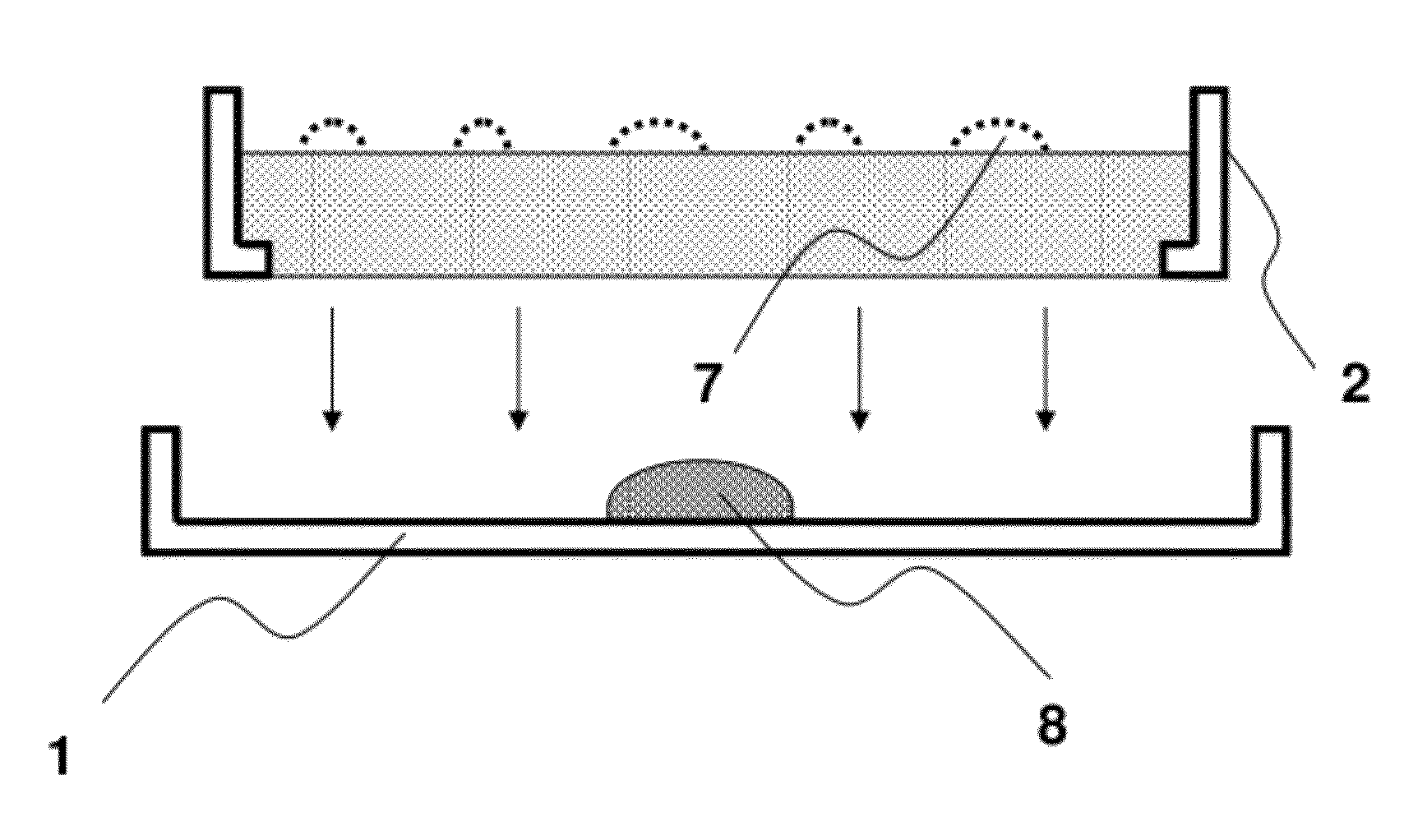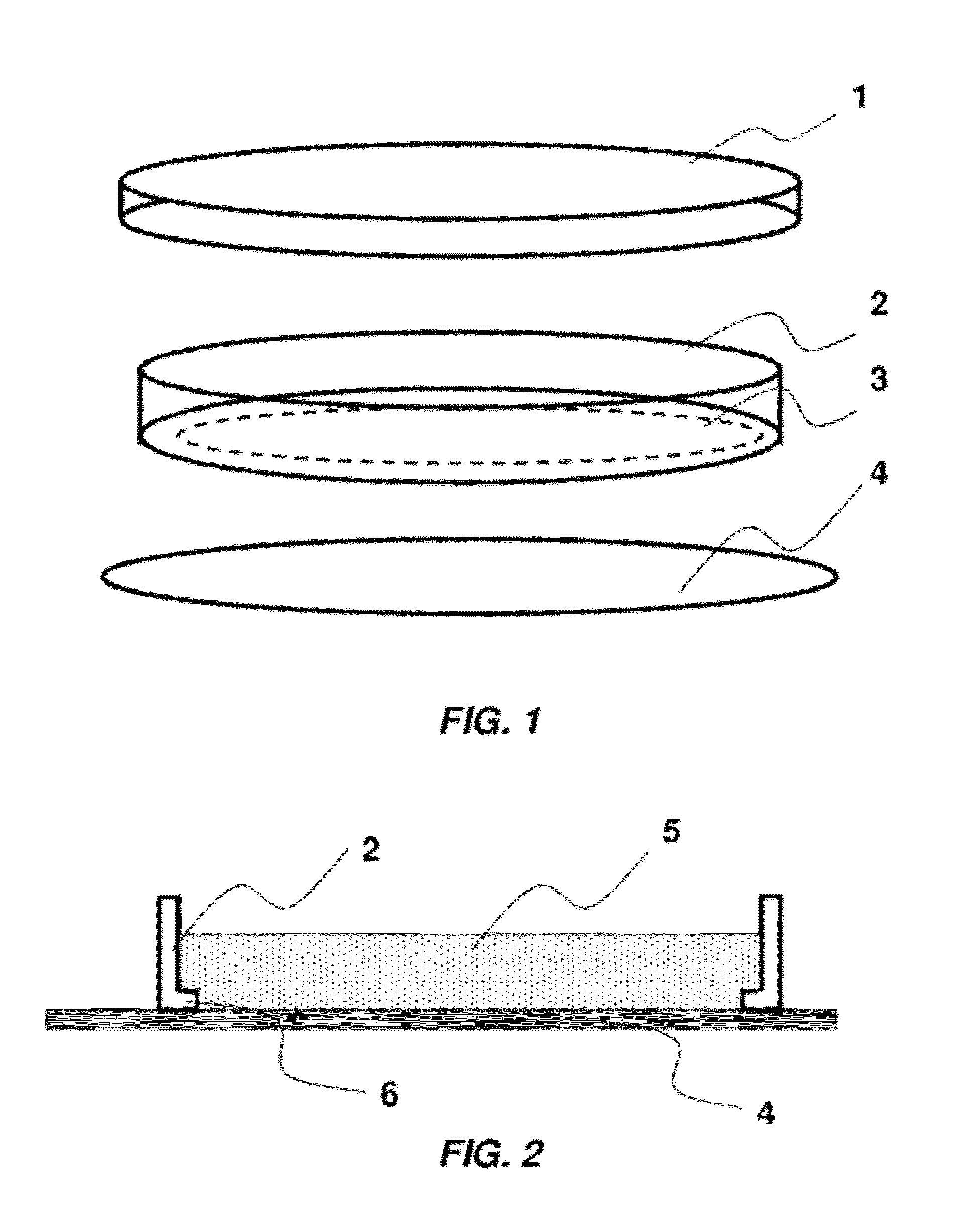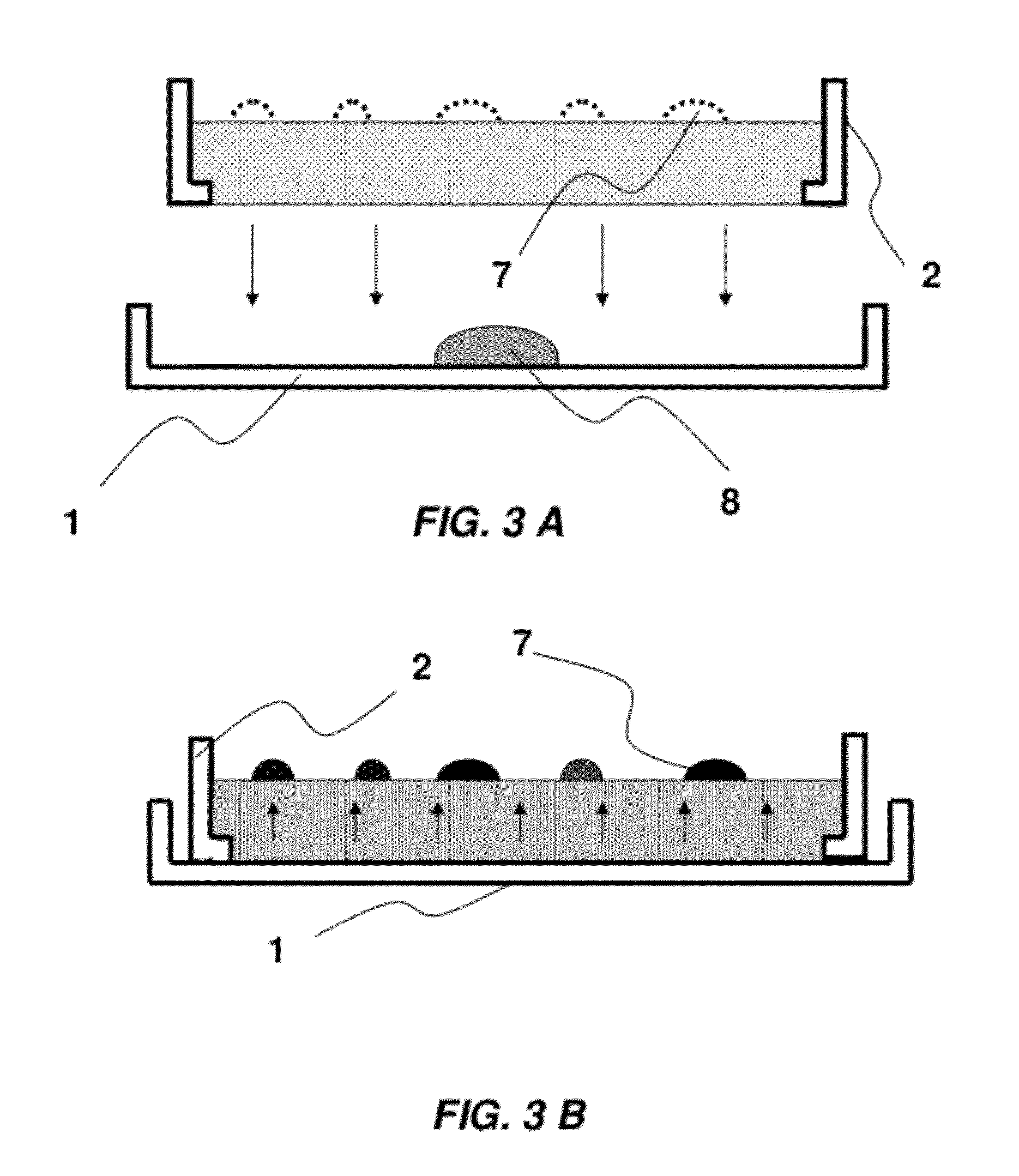Method and apparatus for rapidly analyzing microorganisms using petri plates
a microorganism and rapid analysis technology, applied in the field of microorganism detection, can solve the problems of poor light absorption of microorganisms, atypically small colonies, and often needing prolonged incubation, and achieve the effect of preventing contamination
- Summary
- Abstract
- Description
- Claims
- Application Information
AI Technical Summary
Benefits of technology
Problems solved by technology
Method used
Image
Examples
Embodiment Construction
[0029]Petri plates come in many different sizes and shapes, such as round or rectangular. For example, 35 mm, 60 mm, 95 mm and other circular diameters are common. Various depths are also available. The plates can contain pads inside or a grid on the bottom for convenient counting. Some plates have two, three or more compartments.
[0030]Another type of Petri plate known as a contact plate consists of a raised agar bed for collecting microbes from surfaces. Petri plates are usually made of glass for reusability or polymer, often polystyrene, for disposability.
[0031]However, Petri plates without a bottom that allow access to the lower surface of the nutrient agar have not been available. Methods for adding analytical substances to live cells and transporting the substances through an agar layer are also unknown. The addition of substances that are able to pass through the agar layer more or less rapidly and react with live cells disposed on the opposite side of the agar layer have seve...
PUM
 Login to View More
Login to View More Abstract
Description
Claims
Application Information
 Login to View More
Login to View More - R&D
- Intellectual Property
- Life Sciences
- Materials
- Tech Scout
- Unparalleled Data Quality
- Higher Quality Content
- 60% Fewer Hallucinations
Browse by: Latest US Patents, China's latest patents, Technical Efficacy Thesaurus, Application Domain, Technology Topic, Popular Technical Reports.
© 2025 PatSnap. All rights reserved.Legal|Privacy policy|Modern Slavery Act Transparency Statement|Sitemap|About US| Contact US: help@patsnap.com



